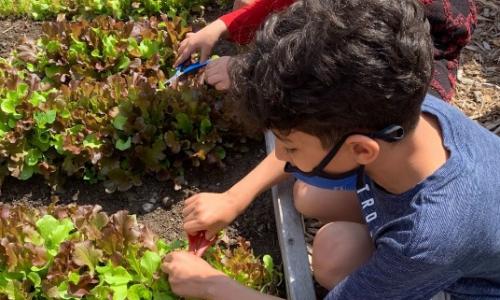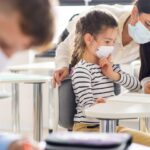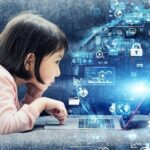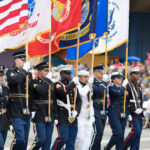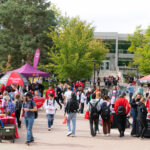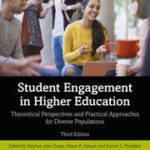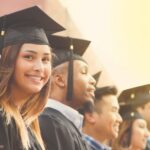Realia in education refers to the use of objects, materials, or real-life experiences to enhance learning. It provides tangible and practical examples that engage students and make abstract concepts more concrete.
These real-life elements help students make connections between theory and practice, thereby improving their understanding and retention of information. Incorporating realia into the classroom promotes active learning, critical thinking, and problem-solving skills. By immersing learners in authentic experiences, realia fosters a deeper appreciation and application of knowledge in real-world contexts, preparing students for the challenges they may encounter outside the classroom.
Overall, realia serves as a powerful teaching tool that facilitates meaningful and memorable learning experiences.
Exploring Realia As A Hands-on Learning Tool
Realia refers to real-life objects, props, or materials that are used in classroom instruction to provide students with hands-on experiences and make learning more tangible. Realia can range from everyday items like fruits and vegetables, coins, or maps, to more specialized objects like scientific equipment or cultural artifacts.
Using realia in education offers several benefits. Firstly, it helps to enhance students’ understanding and retention of concepts by providing concrete examples and experiences. It also stimulates student engagement and active participation, as students can touch, manipulate, and interact with the realia. Additionally, realia promotes critical thinking skills, as students are encouraged to analyze and draw connections between the real-life objects and the subject matter being taught.
In conclusion, realia in education is a valuable tool that can make learning more meaningful and memorable by bringing real-world experiences into the classroom. By incorporating realia, educators can create an immersive and interactive learning environment that caters to diverse learning styles and preferences.

Credit: americanenglish.state.gov
The Impact Of Realia On Student Engagement And Learning
Realia in education refers to the use of real-world objects and materials to enhance student engagement and learning. This instructional approach has a significant impact on student understanding, as it allows them to interact with tangible examples that are directly relevant to the concepts being taught.
One of the key benefits of using realia is that it fosters critical thinking and problem-solving skills. By engaging with real-world objects, students are prompted to analyze and evaluate information in a contextually meaningful way. This hands-on approach encourages them to think critically, identify patterns, and make connections between their learning and the real world.
Moreover, realia promotes active participation and collaboration among students. When working with real-world objects, students often need to collaborate with their peers to explore and understand the materials effectively. This collaborative learning environment encourages communication, teamwork, and the sharing of ideas and perspectives.
In summary, the use of realia in education has a profound impact on student learning by enhancing understanding, fostering critical thinking and problem-solving skills, and promoting active participation and collaboration. By incorporating real-world objects into the classroom, educators can create more meaningful and engaging learning experiences for their students.
Incorporating Realia In Different Subject Areas
Realia is a powerful instructional tool that enhances student learning by bringing real-life objects and experiences into the classroom. Incorporating realia in different subject areas can greatly engage students and make learning more meaningful. In science education, realia allows students to experience science concepts firsthand, making them come alive. For example, bringing in actual specimens, models, or conducting experiments can help students better understand scientific principles and processes. In social studies education, realia enables students to explore historical artifacts, documents, and maps, making history tangible and relatable. This approach helps students develop a deeper understanding of past events and their impact on the present. Realia also plays a significant role in language learning, as it provides immersive experiences and facilitates cultural understanding. By using authentic materials like newspapers, menus, or artifacts, students can practice language skills while gaining insights into different cultures. Overall, incorporating realia in education helps create an interactive and engaging learning environment that promotes deep learning and critical thinking.
Best Practices For Implementing Realia In The Classroom
Best Practices for Implementing Realia in the Classroom
Choosing and Acquiring Realia for Instructional Purposes
Realia, authentic materials from the real world, can greatly enhance the learning experience in the classroom. By incorporating real-life objects, images, or even videos, educators can create authentic learning experiences that engage and motivate students. When selecting realia, it is important to consider its relevance to the subject matter and the students’ background knowledge. Examples of realia can include maps, artifacts, photographs, or even physical models.
Acquiring realia can be done through various means. Teachers can consider contacting local businesses or organizations that might be willing to donate or loan relevant materials. Alternatively, they can seek out online resources or purchase realia from educational suppliers. It is important to ensure that the materials are durable, age-appropriate, and align with the learning objectives.
While implementing realia, educators may face challenges. Some students might be unfamiliar with certain realia, requiring the teacher to provide additional context or explanation. Additionally, there may be limitations in terms of accessibility or availability of certain materials. To overcome these challenges, teachers can supplement the use of realia with other forms of media or visuals, and use inclusive teaching strategies to cater to diverse student needs.
Realia In A Digital Age: Adapting Hands-on Learning To Virtual Settings
Realia in education refers to the use of physical objects or real-life examples to enhance learning. In today’s digital age, educators have found innovative ways to adapt hands-on learning to virtual settings. Exploring virtual manipulatives and simulations allows students to interact with digital objects that mimic real-life experiences, promoting a deeper understanding of concepts. Augmented reality and virtual reality take this immersion to the next level by providing a fully immersive learning experience. Students can visualize and interact with virtual objects, environments, and scenarios, enhancing their learning outcomes. However, it is crucial to strike a balance between traditional realia and digital realia. While digital tools offer convenience and accessibility, the tactile and sensory experiences provided by traditional realia cannot be replaced entirely. By incorporating both formats, educators can provide a comprehensive and engaging learning experience that caters to different learning styles and preferences.
Realia Beyond The Classroom: Community Involvement And Experiential Learning
Realia in education refers to the use of real-life objects, experiences, and resources to enhance learning. Going beyond the classroom, realia can be incorporated into education through community involvement and experiential learning. One way to engage students in realia is through field trips and excursions. These hands-on activities allow students to explore and interact with their surroundings, making learning more meaningful and memorable. Additionally, collaborating with experts and leveraging local resources can provide students with valuable insights and experiences. By connecting classroom learning to real-world applications, students can see the relevance and impact of their studies. Incorporating realia in education can spark curiosity, foster critical thinking, and promote a deeper understanding of the subject matter.
Assessing The Impact Of Realia On Learning Outcomes
Realia, in the field of education, refers to the use of real-life objects or materials to enhance learning experiences. Assessing the impact of realia on learning outcomes is crucial in determining its effectiveness in the classroom. One way to measure student performance and engagement with realia is through the collection of qualitative data, such as student feedback and reflection. This allows educators to gain insights into how realia affects the students’ understanding and engagement with the subject matter. Another aspect to consider is the long-term effects of realia on knowledge retention. By analyzing how well students retain information learned through realia, educators can gauge the effectiveness of this teaching approach.
Frequently Asked Questions For What Is Realia In Education
What Is Realia Teaching Methods?
Realia teaching methods involve using real-life objects to enhance learning. It helps students understand concepts by using tangible examples. Realia promotes active learning and improves engagement in the classroom. It fosters practical knowledge and increases retention.
What Does Using Realia In The Classroom Mean?
Using realia in the classroom means incorporating real-life objects or materials to enhance learning. It helps students connect theoretical concepts with practical examples, improving understanding and engagement. By using realia, teachers can create a dynamic and interactive learning environment.
What Are Realia Materials For Teaching?
Realia materials for teaching are tangible objects used in the classroom to bring real-world experiences into the learning process. These materials include things like maps, money, photographs, and objects related to specific topics. They help students better understand concepts by engaging their senses and providing a link to real-life applications.
What Is The Difference Between Realia And Authentic Materials?
Realia are actual objects used in the classroom for teaching, while authentic materials are real-life resources outside the classroom. Realia is hands-on and tangible, whereas authentic materials include books, newspapers, videos, or websites. Both enhance language learning by providing real-world context and promoting engagement.
Conclusion
Realia in education refers to the use of real-life objects and materials to enhance learning experiences. This hands-on approach allows for active engagement and deep understanding of concepts. By incorporating realia, educators can create dynamic and interactive lessons that bridge the gap between theory and practice.
Students gain practical skills, problem-solving abilities, and a greater appreciation for the subject matter. The integration of realia in education is a powerful tool that fosters experiential learning and prepares students for real-world challenges.
